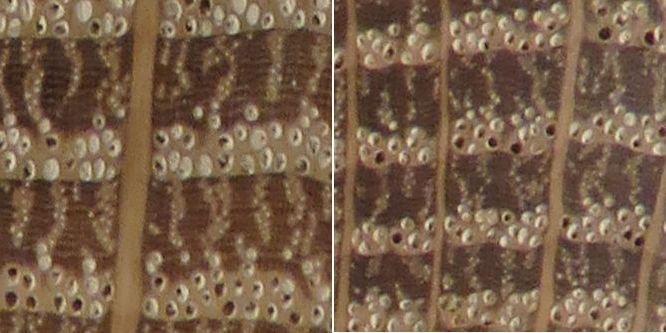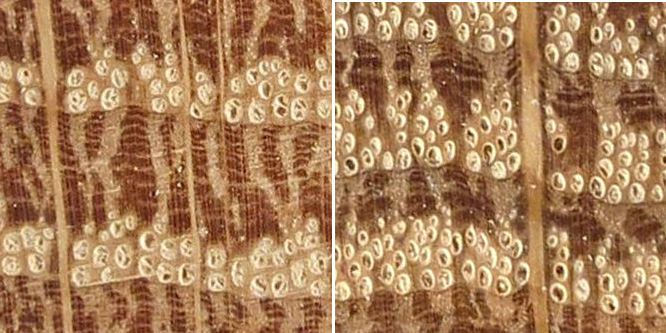| end grain cross sections estimated to be 3/16" x 3/16" | ||
 |
 |
 |
| red oak (very little tyloses) | two views of white oak with plentiful tyloses | |
| end grain cross sections estimated to be 3/16" x 3/16" | ||
 |
 |
 |
| red oak (very little tyloses) | two views of white oak with plentiful tyloses | |

